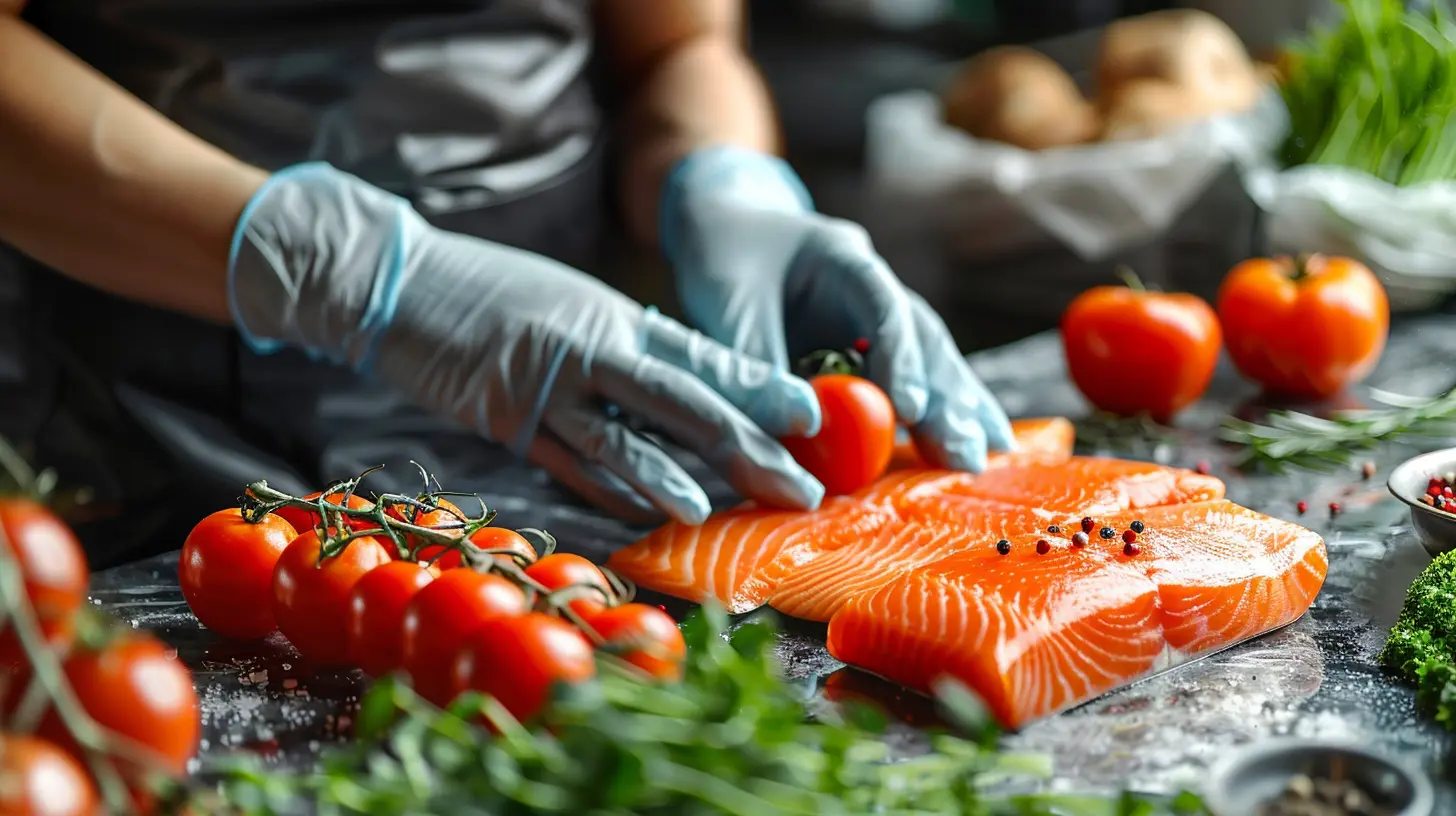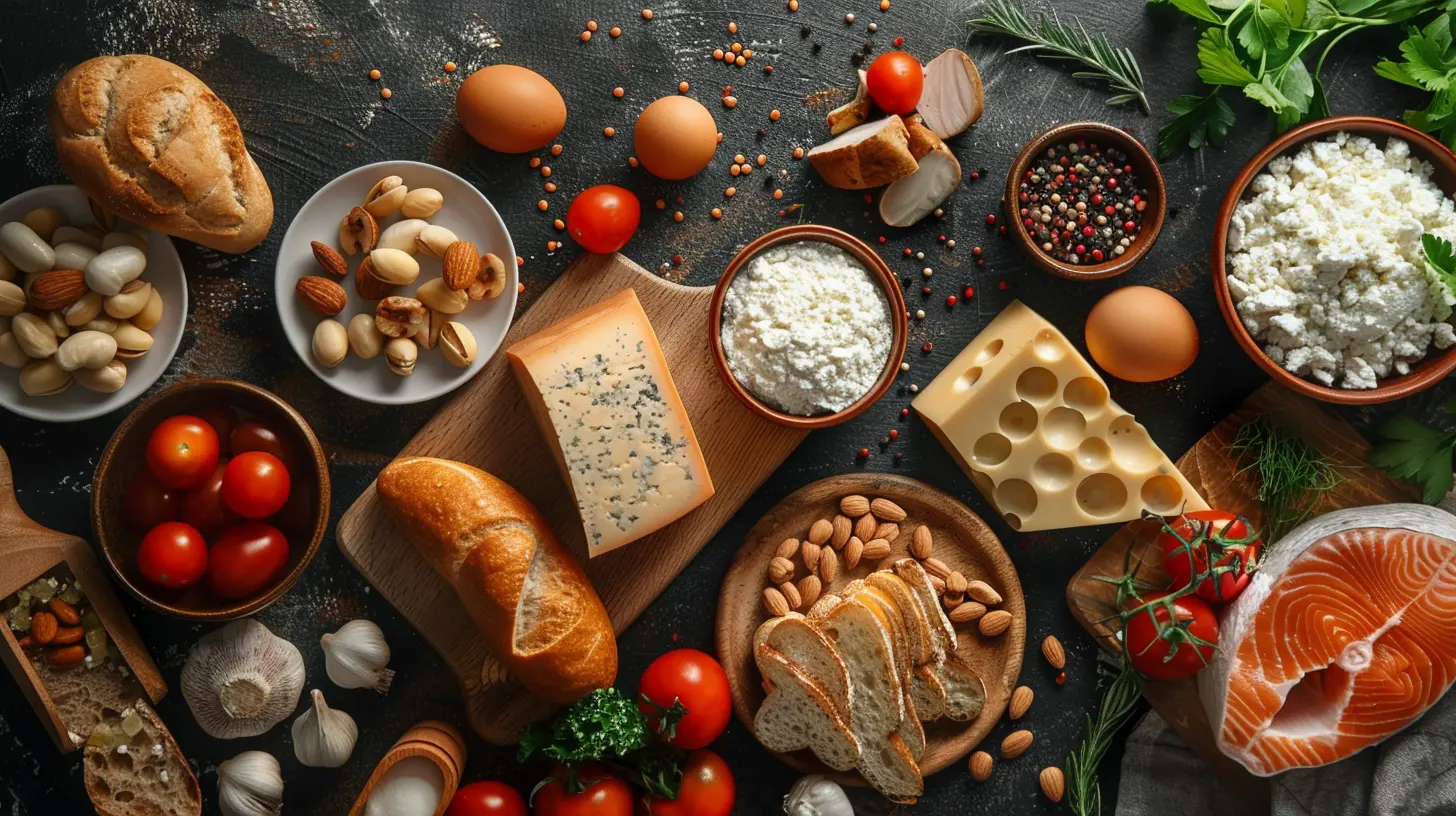Cross-Contamination: What It Is and How to Avoid It
27 April 2025
Let's talk about something that might be sneaking into your kitchen—or even your life—without you even realizing it: cross-contamination. It might sound like a science lab term, but it’s actually something super common that can happen during everyday activities, especially in the kitchen.
So pull up a chair, grab your favorite drink, and let’s break this down together. We’re going to chat about what cross-contamination really is, why it matters (spoiler alert: it can make you or your loved ones seriously sick), and easy, realistic ways to prevent it. Trust me, you're not going to want to miss these tips—they might just save your stomach from some serious drama.
What Is Cross-Contamination?
Before we dive into the nitty-gritty, let’s define this thing.Cross-contamination happens when harmful bacteria or other microorganisms are unintentionally transferred from one substance or object to another. Usually, we’re talking about bacteria like Salmonella, E. coli, or Listeria. And most of the time, the culprit is food. Raw meat, poultry, seafood—these guys are the usual suspects.
Imagine slicing raw chicken on a cutting board, and then using the same board for your fresh veggies without cleaning it. Boom. That salmonella from the chicken can now contaminate your veggies. That’s cross-contamination in action.
Why Should You Care?
Let’s be real—how often have you thought, “Eh, it’s fine, it’ll all cook anyway”? Well, here’s the thing: not everything gets cooked. Think about salads, fruits, sandwiches. If contaminated juices or bacteria get transferred to these items, it can cause serious foodborne illnesses.According to the CDC, about 48 million people in the U.S. get sick from foodborne illnesses every year. That's 1 in 6 Americans.
Food poisoning isn’t just an upset tummy. It can lead to dehydration, hospitalization, or worse—especially for vulnerable folks like kids, seniors, pregnant women, and people with weakened immune systems.
Common Ways Cross-Contamination Happens
Alright, let’s get down to brass tacks. How does this actually happen?1. Using the Same Cutting Board for Everything
We’re all guilty of this at some point. One cutting board, multiple foods—what could go wrong, right? A lot, actually.If you cut raw chicken and then slice cucumbers on the same surface, those crisp veggies can pick up bacteria and carry it straight to your plate.
👉 Pro tip: Keep separate cutting boards—one for raw meats and another for fresh produce. Color-coded boards are life savers!
2. Unwashed Hands
Your hands are like taxis for germs. If you handle raw meat and don’t wash thoroughly, then touch utensils, counters, or other foods—you’re spreading those passengers everywhere.Wash your hands with soap and warm water for at least 20 seconds. (Sing "Happy Birthday" twice—it’s not just for kids!)
3. Reusing Marinades and Plates
Used a marinade for raw meat and want to drizzle it on your cooked steak? Nope. Big no-no.Same goes for using the same plate to bring raw meat out to the grill and then putting cooked meat back onto it. That plate is now a bacteria breeding ground.
4. Improper Food Storage
Putting raw meat on the top shelf of your fridge? That’s a disaster waiting to happen. Juices can drip down and contaminate everything below.Store raw meat on the bottom shelf, preferably in a sealed container.
5. Dirty Dish Towels and Sponges
Guess what’s one of the nastiest things in your kitchen? Your sponge. Yup, that innocent-looking scrubber might be spreading bacteria more than it’s cleaning.Change out sponges and wash dish towels often. Bleach or boiling water can help sanitize.
How To Avoid Cross-Contamination: Simple, Practical Tips
Now that we know how cross-contamination sneaks in, let’s take a look at how to boot it out for good.1. Set Up a Clean Cooking Area
Before you start cooking, make sure your kitchen surfaces, utensils, and hands are clean. Keep disinfectant wipes handy or go old school with soap and water. It doesn’t have to look perfect—just clean.2. Use Separate Tools for Different Foods
Have a system. Color-coded knives and cutting boards are awesome. You can even label them:- Red = meat
- Green = veggies
- Blue = seafood
- Yellow = poultry
Easy to remember and foolproof.
3. Cook Food to the Right Temperature
Use a food thermometer—yes, it’s worth it. Different foods have different safe cooking temps:- Chicken: 165°F (75°C)
- Ground beef: 160°F (71°C)
- Fish: 145°F (63°C)
Cooking kills most bacteria, but only if the food hits that magic number.
4. Store Groceries Properly
As soon as you’re back from the store, store your perishables. Keep raw meat away from ready-to-eat foods, preferably in sealed containers or bags. And remember—bottom shelf!If you freeze meat, make sure it’s in leak-proof bags. No one likes mystery juices thawing in the fridge.
5. Wash Produce Well
Even if they say “pre-washed,” it’s a good idea to give produce a rinse under running water. No soap, just water. Scrub firm fruits and veggies with a brush.6. Be Mindful at the Grill or BBQ
Grilling season? Fantastic. But don’t let those good times be spoiled by a bad burger.Keep raw and cooked items separate. Have different tongs and plates for raw and cooked meat. And never reuse marinades—prepare a separate batch if you want to add flavor after cooking.
Cross-Contamination Beyond the Kitchen
Believe it or not, cross-contamination can happen outside of the kitchen too. Yup, it's not just about food.1. In Restaurants
If a server touches dirty dishes and then serves your food without washing hands—yep, contamination. That’s why gloves and hand hygiene are a big deal in food services.2. Grocery Stores
Ever touched a raw chicken package, then grabbed a bag of apples? That’s a transfer. Always bag raw meats, and sanitize your hands after shopping.3. Picnics and Potlucks
Outdoor eating is fun, but often lacks proper handwashing or food safekeeping. Bring sanitizers, keep hot foods hot and cold foods cold, and avoid double-dipping!4. Lunch Boxes and Workspaces
Packing lunch? If your sandwich is touching yesterday’s unwashed plastic container, it could be carrying hidden germs. Clean containers after each use.Special Considerations for Vulnerable Groups
Certain people are more at risk of getting seriously ill from cross-contamination, including:- Pregnant women
- Young kids
- Older adults
- People with weakened immune systems
If you or someone you care for falls into one of these categories, it's extra important to be vigilant. Don’t cut corners, even if it feels like a hassle. Trust me, it’s worth the peace of mind.
Cross-Contamination FAQs
Can I just rinse raw meat to clean it?
Nope! Washing raw meat can actually splash bacteria around your sink and kitchen. It doesn’t remove the germs—instead, cook it to the right temp to make it safe.Should I be using gloves in the kitchen?
Gloves can help, but they’re not a substitute for handwashing. Also, if you touch raw meat with gloves and then touch other items, it’s the same problem. Think of gloves as a tool—not a hack.How often should I replace cutting boards?
If your cutting board has deep grooves or cracks, it’s time to say goodbye. Bacteria can hide in those cuts. Plastic cutting boards can often go in the dishwasher, which helps sanitize them.Final Thoughts
Cross-contamination might sound like a small thing, but it can have huge consequences. The good news? It’s 100% preventable with a little know-how and a few easy changes to your kitchen habits.At the end of the day, it’s all about keeping your loved ones safe and healthy—and hey, who doesn’t want to be the household food safety superhero? 🦸♂️🦸♀️
So the next time you're cooking up something delicious, think of this: is your cutting board clean? Are your hands washed? Is your burger cooked all the way through? Small questions, big impact.
Stay safe, eat well, and keep those germs in check!
all images in this post were generated using AI tools
Category:
Food AllergiesAuthor:

Madeline Howard
Discussion
rate this article
5 comments
Sorin Ward
Cross-contamination is like a food party gone wrong! Keep your ingredients from mingling too much to ensure a safe and scrumptious meal. Remember, separate those veggies from the meats, and let the good times roll—safely!
May 10, 2025 at 3:55 AM

Madeline Howard
Absolutely! Keeping ingredients separate is key to preventing cross-contamination and ensuring food safety. Thanks for the fun reminder!
Heather Bass
Great article! Remember, a little awareness goes a long way. With simple steps, we can keep our meals safe and healthy. Let’s cook with confidence!
May 8, 2025 at 2:52 PM

Madeline Howard
Thank you for your positive feedback! You're absolutely right—awareness and simple practices are key to ensuring safe and healthy meals. Let’s keep cooking confidently!
Avery McConnell
Cross-contamination? Honey, it’s not just a kitchen faux pas; it’s a recipe for disaster! Keep your food safe and your stomach happy—sanitize like your life depends on it!
May 7, 2025 at 3:20 AM

Madeline Howard
Absolutely! Cross-contamination can lead to serious foodborne illnesses. Practicing proper sanitation is essential for keeping your meals safe and healthy. Thanks for the reminder!
Kairoth Patel
Great tips! Cross-contamination is sneaky—definitely need to be more careful in the kitchen!
May 1, 2025 at 4:27 AM

Madeline Howard
Thank you! I'm glad you found the tips helpful—staying vigilant about cross-contamination is key to kitchen safety!
Ramona McGrady
Great article! Understanding cross-contamination is crucial for maintaining a healthy kitchen. By being mindful and implementing simple practices, we can protect our health and that of our loved ones. Let’s embrace these tips and create a safe cooking environment together—small changes make a big difference! Stay healthy and happy!
April 28, 2025 at 4:13 PM

Madeline Howard
Thank you for your thoughtful comment! I'm glad you found the article helpful. Together, we can make our kitchens safer and healthier!




